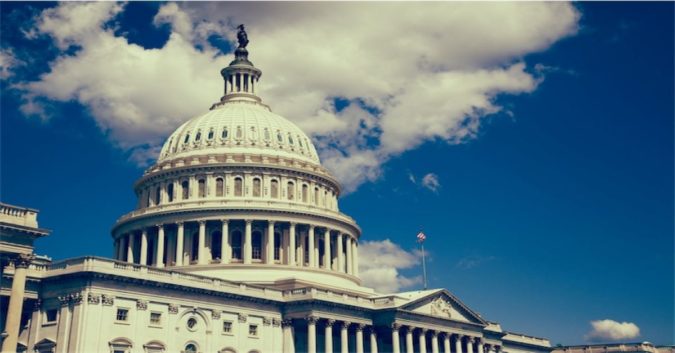On January 10, the House of Representatives approved a bill that would provide stricter regulations of “forever chemicals.” This dangerous group of substances captured the headlines last year as the nation learned more about the cancer-linked chemicals that contaminated the drinking water of 110 million Americans.
Per- and poly-fluoroalkyl substances, referred to as PFAS, are often used in the manufacture of non-stick and water-repellant products, as well as firefighting foam. They get their name — “forever chemicals” — because they are not readily broken down by natural causes. Instead, the toxic substances persist in the environment, building up in the food and water supply.
Since at least the 1950s, industry studies have shown the adverse health effects of PFAS. Companies involved in the creation of PFAS hid the results from the public and their own workers, some of whom got sick or later had children with birth defects. These companies also dumped massive quantities of the poisonous sludge in rivers and landfills and continued selling toxic firefighting foam to the military without warnings.
The legislation, known as the PFAS Action Act of 2019, (H.R. 535), is the latest attempt from Democrats to prod the Environmental Protection Agency (EPA) into action. To this day, the groundwater surrounding hundreds of Army and Air Force Bases is polluted. Without comprehensive cleanup, the problem is only going to get worse.
What Is in the PFAS Action Act?
The draft of H.R. 535 that passed the House incorporated a number of related bills that address the wide range of problems posed by PFAS. Most of the new rules concern PFOA and PFOS, the 2 most abundant forever chemicals, but the EPA is tasked with considering other PFAS within 5 years.
The new legislation would force the EPA to take immediate and long-term actions to protect communities that have been impacted and to put regulations in place that will prevent PFAS contamination from spreading.
Such measures include:
- Designating PFOA and PFOS as hazardous substances under superfund law
- Requiring the cleanup of sites contaminated by PFOA and PFOS
- Setting air emission limits
- Prohibiting unsafe incineration of PFAS
- Limiting the introduction of new PFAS into commerce
- Identifying health risks by increasing testing, reporting, and monitoring requirements
- Requiring a nationwide drinking water standard for PFOA and PFOS
- Providing grants to impact water systems and guidance to first responders on how to limit exposure.
Some of these requirements have drawn the ire of the White House and Republicans because they are similar to actions the EPA is already taking as part of its PFAS Action Plan. In the days leading up to the vote on H.R. 535, the EPA released a statement hyping how “aggressively” it had addressed PFAS under President Trump.
It’s a perspective that Rep. Debbie Dingell (D-MI) and a bipartisan majority of the House do not share. Many feel the Trump EPA has failed to follow through on the few token commitments it made as part of its action plan.
Delaying action on PFAS cannot wait.
“Let’s be very clear,” said Rep. Dingell, who introduced the bill last year. “PFAS is an urgent public health and environmental threat. And the number of contamination sites nationwide is growing at an alarming rate, including our military bases.”
Expect a Bitter Fight to Do What’s Right
The PFAS Action Act passed the House with bipartisan support, yet it is certain to meet roadblocks in the Senate and a veto from President Trump. Even with 24 Republican votes in favor of the bill, many of the party’s top leaders have labeled it “partisan” and say it is dead on arrival in the Senate.
For the bill’s supporters, not all of whom are Democrats, the stiff opposition is nothing new. There are huge commercial and industrial interests with a lot at stake, and they have been fighting in Washington and in courts around the country to limit the requirements concerning PFAS.
The Republican-controlled Senate can stall this bill in any number of ways, and some have portrayed H.R. 535 as a “messaging bill,” which plays to political desires but has no real future.
Nothing could be further from the truth.
Along with cancer risks, human exposure to PFAS can affect learning, growth, and interfere with the immune system and the body’s natural hormones. The forever chemicals are known as “bio-accumulative,” which means they build up inside a person’s body, and it takes years for the toxins to leave.
Dingell called on her colleagues across the aisle to take up the legislation and get help to American citizens with a growing public health crisis on their hands. She said:
“We all must work together to protect human health and our environment. Further inaction only means more people continue to be poisoned and contamination spreads further.”
Whether they want to acknowledge it or not, Republicans in the Senate have an opportunity to enact legislation that will protect the public health for generations.
